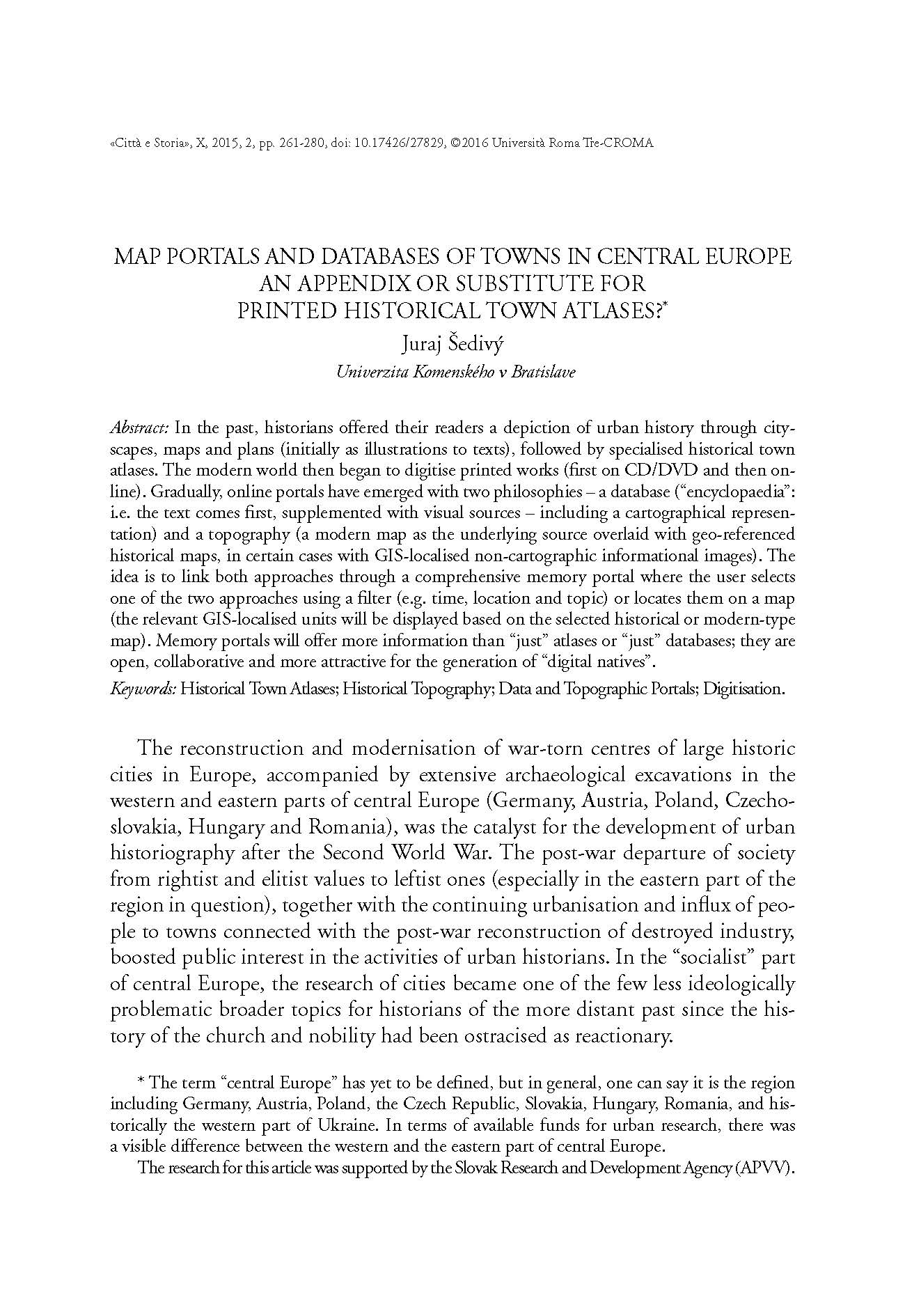Map Portals and Databases of Towns in Central Europe. An Appendix or Substitute for Printed Historical Town Atlases?
6,00 €
In the past, historians offered their readers a depiction of urban history through cityscapes, maps and plans (initially as illustrations to texts), followed by specialised historical town
atlases. The modern world then began to digitise printed works (first on CD/DVD and then online).
Gradually, online portals have emerged with two philosophies – a database (“encyclopaedia”: i.e. the text comes first, supplemented with visual sources – including a cartographical representation) and a topography (a modern map as the underlying source overlaid with geo-referenced historical maps, in certain cases with GIS-localised non-cartographic informational images). The idea is to link both approaches through a comprehensive memory portal where the user selects
one of the two approaches using a filter (e.g. time, location and topic) or locates them on a map (the relevant GIS-localised units will be displayed based on the selected historical or modern-type map). Memory portals will offer more information than “just” atlases or “just” databases; they are open, collaborative and more attractive for the generation of “digital natives”.
In the past, historians offered their readers a depiction of urban history through cityscapes, maps and plans (initially as illustrations to texts), followed by specialised historical town
atlases. The modern world then began to digitise printed works (first on CD/DVD and then online).
Gradually, online portals have emerged with two philosophies – a database (“encyclopaedia”: i.e. the text comes first, supplemented with visual sources – including a cartographical representation) and a topography (a modern map as the underlying source overlaid with geo-referenced historical maps, in certain cases with GIS-localised non-cartographic informational images). The idea is to link both approaches through a comprehensive memory portal where the user selects
one of the two approaches using a filter (e.g. time, location and topic) or locates them on a map (the relevant GIS-localised units will be displayed based on the selected historical or modern-type map). Memory portals will offer more information than “just” atlases or “just” databases; they are open, collaborative and more attractive for the generation of “digital natives”.

